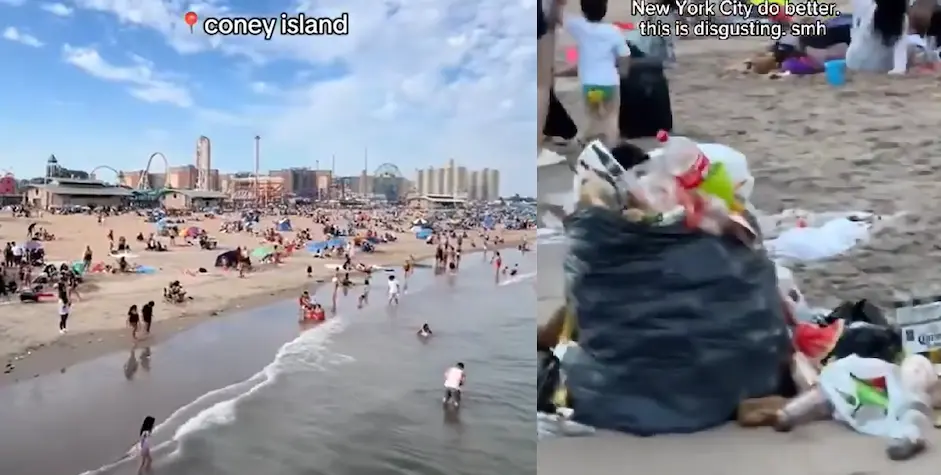
Coney Island, once a symbol of summer joy, now faces mounting criticism over trash, overcrowding, and poor maintenance
From Icon to Eyesore: The Decline of Coney Island’s Cleanliness
Coney Island has long been a cultural landmark, its boardwalk, amusement rides, and beach drawing millions each summer. But in recent years, the shine has dulled. Visitors now report piles of trash, overflowing bins, and unsanitary conditions that mar the experience. Social media is flooded with images of discarded food containers, plastic bottles, and even diapers strewn across the sand.
While some argue that Coney Island has always had a gritty charm, many locals say the situation has worsened dramatically. “It’s not just messy, it’s embarrassing,” said one Brooklyn resident. “You can’t walk ten feet without stepping over garbage.”
The issue isn’t just cosmetic. Public health experts warn that accumulated waste can attract pests, contaminate the water, and pose serious risks to beachgoers. The New York City Department of Parks and Recreation has acknowledged the problem, citing staffing shortages and increased foot traffic as contributing factors. However, critics argue that these explanations fall short, especially given the city’s long-standing awareness of the issue.
Public Outcry and the Push for Accountability
The backlash has been swift and vocal. Community leaders, environmental activists, and everyday New Yorkers are demanding action. Online forums and local news outlets have become battlegrounds for debate, with many calling for increased sanitation budgets, more frequent cleanups, and stricter enforcement of littering laws.
Some residents have taken matters into their own hands. Volunteer cleanup groups have organized weekend efforts to collect trash and raise awareness. “We shouldn’t have to do this,” said one organizer, “but if the city won’t step up, we will.”
The conversation has also expanded beyond Coney Island. Many see the beach’s decline as a symptom of broader urban neglect. From subway delays to crumbling infrastructure, critics argue that New York City is failing to maintain its public spaces. “This isn’t just about one beach,” said a city planner. “It’s about how we value and care for the commons.”
In response, some city officials have promised to review maintenance protocols and explore partnerships with local organizations. But for many, these pledges ring hollow without visible, lasting change.
Seeking Solace Elsewhere: The Rise of Alternative Beaches
As Coney Island’s reputation falters, beachgoers are looking elsewhere. Brighton Beach, just a short walk away, has emerged as a cleaner, quieter alternative. Rockaway Beach in Queens is also gaining popularity, praised for its improved facilities and more consistent upkeep.
Travel blogs and local guides now routinely recommend these spots over Coney Island, citing better water quality, less crowding, and a more relaxed atmosphere. “It’s worth the extra travel time,” said one Manhattan resident. “At least I don’t have to dodge trash bags on the sand.”
This shift in public preference could have long-term implications. Coney Island businesses, already struggling post-pandemic, rely heavily on summer tourism. A sustained drop in visitors could further erode the area’s economic vitality and cultural relevance.
Yet, some remain hopeful. “Coney Island has survived worse,” said a local historian. “It’s a place of reinvention. But it needs help now more than ever.”
Stay updated with the latest news on Rapido Updates. Keep yourself updated with The World, India News, Entertainment, Market, Automobile, Gadgets, Sports, and many more